A walk through history in Berlin
History never leaves you in Berlin. It is palpable in the city’s buildings, institutions, neighborhoods and memorials. Devastation and division, restoration and renewal, give the city a special look.
Mitte, the pre-World War II center of the city, is in the area which became East Berlin following the war. Unter den Linden, the Brandenburg Gate, the Staatsoper and Museum Island, a UNESCO World Heritage Site containing five historic museum buildings, are located here.
West Berlin countered the loss of its major cultural sites by building new ones. Hence, the Kultur Forum (containing the Gemäldegalerie and the Kunstgewerbemuseum), the Neue Nationalgalerie, the Philharmonie and the Kammermusiksaal were constructed. The west also boasts many impressive modern office and government buildings.
Although there is no longer a wall dividing the sectors, the city still has two centers.
It is helpful to remember this history when planning a trip to Berlin. Mitte, because it is near so many popular spots, is favored by many visitors. I chose to stay in the former West Berlin, and it was a good choice. There were fewer tourists, more Berliners, and, as long as you are within a few blocks of Kurfürstendamm (usually called just Ku’damm), there is easy access by bus to most parts of the city.
The bus system is efficient (illuminated signs at most stops tell you how long you will have to wait) and travels close to almost every major site. Underground trains (U-Bahns) are faster but, obviously, offer no view.
What to see and do
The number of museums in this city is overwhelming. There are 50 state museums and many private ones. Some are small enough that you can visit more than one in a day, and some require more than one visit to truly savor. This list is just a small selection of my favorites.
BIG DON’T-MISS MUSEUMS
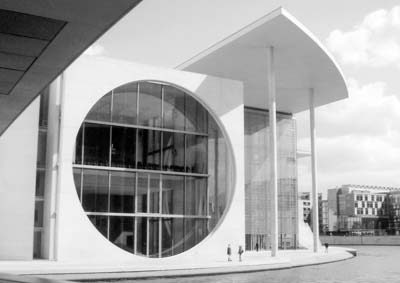
Gemäldegalerie (Painting Gallery):A large barren concrete plaza leads up to the Kultur Forum, West Berlin’s response to losing its historic cultural center. In one corner of the building’s mediocre modern interior, two ordinary glass doors lead to the Gemäldegalerie. It is hard to imagine a less impressive introduction to such an extravagantly wealthy collection of European paintings.
Unlike most world-class art collections, this one did not just grow by gift, conquest and haphazard acquisition but was the result of systematic collecting during the 19th century, a time when money and taste could build an unparalled collection of European masterpieces.
The paintings suffered severely during World War II and its aftermath; some were destroyed by fire, some were hidden in salt mines, some ended up in East Berlin, some in West Berlin.
In 1992, Berlin’s municipal museums were unified, and in 1998 the entire collection of 3,000 paintings (about half of which are on display) was reunited into this building. The audio tour and written material are available in English, and the building has a nice cafeteria.
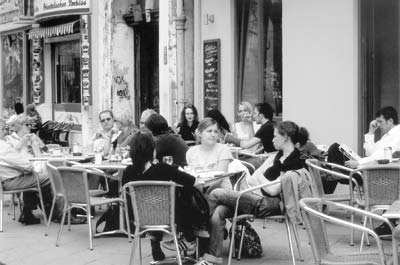
Alte Nationalgalerie: An imposing 19th-century neoclassical edifice (it’s hard to call it just a building), the Alte Nationalgalerie is on Museum Island and was the first East Berlin museum to be restored and modernized after the wall came down. The interior is now modern, but occasionally one comes upon a hall or gallery which has been restored to its 19th-century grandeur.
The collection is mostly 19th-century German. It includes some lovely pieces, some interesting ones and some which are so far removed from contemporary taste that one could call them funny.
The collection is worth seeing not only for itself but for the perspective it gives to the new movements at the end of the 19th century. The change is impressively shown in the last two rooms, where works by Monet, Manet and van Gogh, as well as those by lesser-known German Impressionists, are hanging.
After the heavy Romanticism and historicism of the previous galleries, the sparkle and light in these rooms contribute to an understanding of the history of painting. Labels and audio guides are in English.
A SMALL SELECTION OF SMALL MUSEUMS
The Museum Berggruen is small but perfect, especially for anyone who can never get enough of Picasso. Works by Matisse, Klee and Giacometti add to its delight.
This is Heinz Berggruen’s personal collection, and it makes one wish to be rich.
Located directly behind Museum Berggruen, the Bröhan Museum is dedicated to late 19th- and early 20th-century decorative arts. Its display of Art Nouveau and Art Deco works makes one realize that there is an infinite number of absolutely delightful shapes into which copper, clay and silver can be formed.
Markets
On weekends in nice weather (or even if it’s raining a bit), Berliners browse in open-air craft/flea/antique markets.
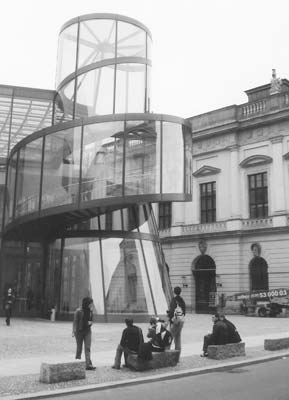
Trödel und Kunstmarkt, on Strasse des 17 Juni, is said to be the largest in Berlin. Four aisles deep and many blocks long, the plethora of “stuff” — antique hardware, ’30s pottery, crystal and silver, paintings and postcards, paperweights, statues, etc. — is exhausting but satisfying! Prices vary and bargaining is expected.
For crafts, try the Sunday crafts market between the River Spree and the German Historical Museum. It features pottery, paintings, leather, wood, reasonable prices and friendly vendors and makes a delightful Sunday afternoon stroll.
Come to the working class district of Kreuzberg on Tuesday or Friday and you’ll find the Turkish Market. Stretching for many blocks along the Landwehr Canal, it is famous for its fresh produce. With artistically arranged red peppers gleaming beside plump yellow melons and piles of loose dark green spinach, the market teases the eyes as well as the appetite.
At other stalls, fashion-conscious Turkish women congregate to buy head scarves in a wide variety of colors and patterns. There are also clothes, some household goods, and tables and tables of fabrics at very reasonable prices. I limited myself to several yards of decorative ribbon.
Even if you buy nothing (but I would recommend at least buying a package of fresh Turkish flat bread to nibble), this market is fun.
Berlin remembers
Jüdisches Museum (Jewish Museum): A windowless, fortress-like metal exterior sets the somber mood for a museum which was designed not to provide neutral exhibition space but to convey a message through its architecture.
The feelings of disorientation and apprehension which I experienced within Berlin’s Jewish Museum were purposeful. They came from sloping ceilings and floors, gashes and voids in the walls and long dark galleries with sharp zigzagging turns. The floor plan, based on a line bent nine times at acute angles, is meant to invoke feelings of confusion and unease.
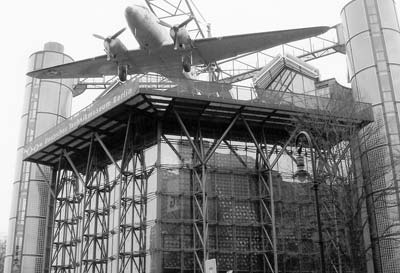
One guide to the museum cautioned, “Visitors… will need to try to follow [the architect’s] train of thought… even though they might find it confusing and exasperating at times.”
Designed by Daniel Libeskind, Berlin’s much-discussed new museum can be seen as either an exciting and imaginative example of late 20th-century architecture or possibly the most self-indulgent edifice of the century. In either case, it is worth experiencing.
Holocaust Memorial: Both perplexing and moving are the plain gray concrete slabs which constitute the aboveground portion of the Memorial to the Murdered Jews of Europe (Holocaust Memorial). There are more than 2,700 of them, set in tight rows, covering almost five acres of ground. Below ground is an information center.
Set in a prime location near the Brandenburg Gate, this memorial was controversial before its construction and continues to be so today.
Wittenbergplatz Memorial: Unheralded, almost inconspicuous, a small metal-framed sign sits on a busy square in front of the Wittenbergplatz U-Bahn station. This is the station from which trains departed for the concentration camps, and the metal frame holds 12 slats bearing the names of those concentration camps. The words on top (in German) read, “Places of Horror, Which We Are Never Allowed To Forget.”
After the bold architectural statements and monumentality of the Holocaust Memorial and Jewish Museum, I found this simple reminder of the fate of Berlin’s Jewish community to be the most moving.
Eating and drinking
When the sun finally makes it out of the gloom of winter and early spring (I was there in April), Berliners take to sidewalk cafés, as popular here as in Paris and Vienna.
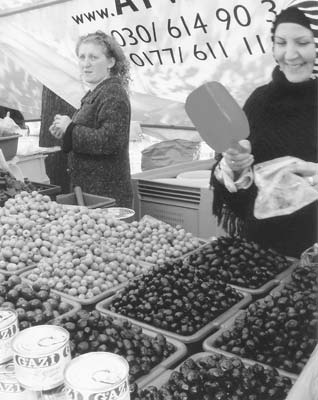
Try to forget calories and cholesterol and order a strawberry tart or apple cake with your cappuccino. (Schlag — real whipped cream — is optional on cake and cappuccino.)
German food is, well, German — portions are huge and frequently fried, usually featuring meat and potatoes. But please don’t scorn the lowly schnitzel; try it at least once. Berliners somehow make these slices of chicken, pork or veal, batter covered and quickly deep-fried, taste better than I imagined they could.
There are also many Italian, Japanese and Thai restaurants throughout the city.
In Berlin, there is no question about drinks. In addition to uniformly good coffee (€1.50-€2) and cappuccino (€2.50), there are draft beers, amongst the best in the world (usually about €2.50), and local wines (€3-€5), which can be excellent.
Among my favorite lunches (available in most cafés) is what is called the grosse Frühstück (large breakfast). With two to three kinds of meat, three to four kinds of cheese, sometimes a hard-boiled egg, assorted fruit and bread, butter and rolls, it might be overwhelming at breakfast but tasted great at midday. Depending on where you are, it could cost €5-€7.
Eating recommendations near the Ku’damm
Quiet and upscale but unpretentious, Lubitsch (Bleibtreustrasse 47), two blocks from Kurfürstendamm, offers good service and an excellent chef. I ate potato soup all over Berlin, and the best was here (€5). I followed it with pickled salmon enticingly arranged like a rose and surrounded by potato pancakes (€12.50).
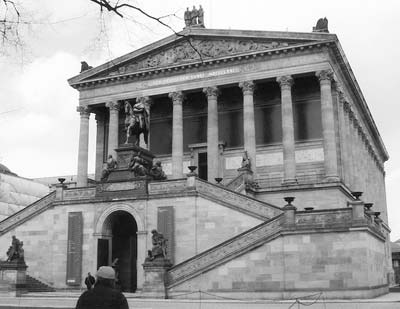
Most guidebook writers put centrally located Wertheim Department Store (Kurfürstendamm 231), at the Kurfürstendamm U-Bahn stop, under “Shopping,” but I love it for its top-floor buffet restaurant.
The seating area is like a theme park. You can choose to dine in the Greek corner, with classical statues and urns, or the Mexican one, with gaily colored fabrics and pottery vases.
There is also a gazebo with trailing vines and a garden with a fountain and rattan chairs. You can even eat in a rowboat! The view over the city is impressive, and the food is varied, good and reasonably priced.
The Konditorei-Café Genenz (Brandenburgische Strasse 32), one block from Adenauerplatz, is a small elegant café frequented regularly by people who live in the area. Its pastries (€1.50-€3) are absolutely the best! (They also serve light meals.) I confess to sometimes having had both breakfast and afternoon coffee here.
Berlin offers so much to see and do, so much to eat and drink, so much history and so many memorials that visitors to this dynamic, bustling city need to make hard choices. This article is meant to stimulate ITN readers to go to Berlin and make those choices.
I would be happy to answer readers’ questions emailed c/o ITN.

